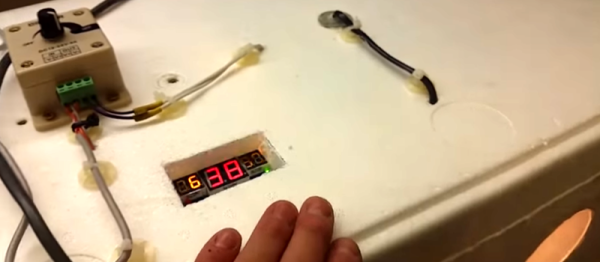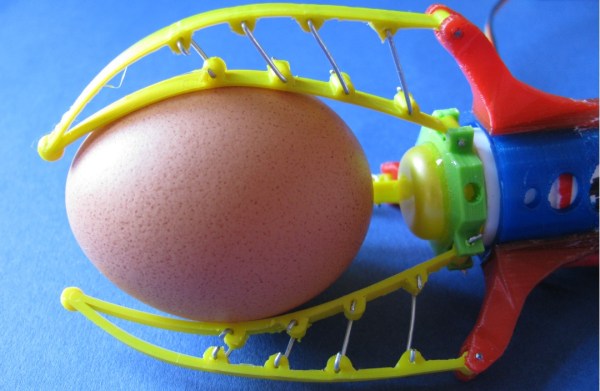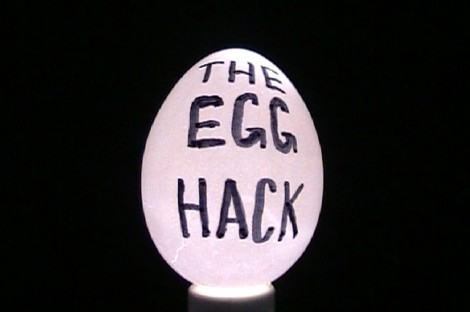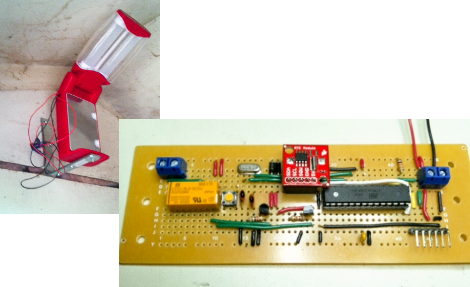You’d think that hatching chicks from eggs would be easy – after all, birds do it. But it turns out to be a fussy business for humans, and what momma bird does naturally isn’t necessarily easy for us. If your goal is to raise your own brood of peeps, fear not – this DIY egg incubator makes the process much easier.
While [Chris Raynerd]’s incubator was built for quail eggs, pretty much any domestic fowl – chickens, turkeys, ducks, pheasants – will work. The key is temperature control – momma bird’s rump is a natural heat source, and her downy feathers keep the eggs insulated and toasty. That’s a little hard to replicate in a free-air incubator, so [Chris] started with a polystyrene box for insulation. A halogen lamp on a digital thermostat provides most of the heat and keeps the temperature within a degree or two of 37°C. As a backup, a 12 volt halogen bulb on a dimmer keeps the chamber at a minimum of 36°, just in case the main lamp burns out. A small fan and a pan for humidifying water complete the atmospheric controls, although personally we’d arrange the fan to blow across the water to aid evaporation. And a simple grid lets [Chris] turn the eggs regularly, which is another vital service mom provides to her brood.
Sure, it could be Arduino-fied and servo driven, but why bother? This is a simple yet thoughtful build that should see a clutch through to hatching. We’ve seen a few egg incubators before, but even if you’re not interested in raising fowl, the techniques here could easily apply to incubators for biohacking or yogurt making, too.
Continue reading “Start Your Poultry Brood With This DIY Egg Incubator”



















